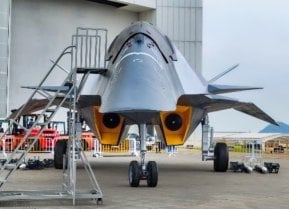Russia's T-14 Armata Tank Nightmare Explained in Just 2 Words
Russia's T-14 Armata main battle tank, touted as a game-changer, has yet to see combat in Ukraine despite over two years of intense fighting.
Total Failure: Russia's T-14 Armata main battle tank, touted as a game-changer, has yet to see combat in Ukraine despite over two years of intense fighting.

-Weighing 55 tons and armed with a 125mm main gun, the T-14 has faced production delays and cost concerns.
-Russia claims the tank is too expensive to risk on the battlefield, opting instead for the T-90, but this decision also appears influenced by marketing considerations.
-Deploying the T-14 in Ukraine risks its destruction by Western anti-tank systems, which would tarnish its reputation in the global arms market. For now, the T-14 remains a symbol of unfulfilled potential rather than a combat asset.
Why Russia’s T-14 Armata Tank Isn’t Fighting in Ukraine
Is the Russian military finally deploying its latest T-14 Armata main battle tanks into Ukraine?
Recent footage from months back indicates that the T-14 Armata is working and is in operational condition, but it won’t be seeing actual combat any time soon.
The T-14 in Ukraine? Well...
The T-14 Amrata has been years in the making.
Weighing 55 tons and with a crew of three (commander, driver, and gunner), the T-14 Armata tank packs a 125mm main gun with an automatic loading system.
Despite years of promotional fanfare, the tank has suffered production delays and manufacturing issues.

In March, Sergey Chemezov, who leads the Russian defense giant Rostec, confirmed prior Western intelligence assessments and our coverage here at The National Interest that the Russian military hasn’t deployed the T-14 Armata tank in Ukraine.
Chemezov said that the T-14 Armata is simply too expensive to deploy in the fighting in Ukraine, adding that the T-90 main battle tank is a more efficient option.
Previously, the TASS state news agency had stated that the Russian military had used the T-14 Armata in Ukraine several times. The state-controlled media outlet has been known to push the Kremlin’s narrative, regardless of its accuracy.
T-14 Armata: A Failed Project for Russia
For all terms and purposes, the T-14 Armata should be considered a failed project.
Russia has been engaged in the largest conflict since the end of World War II. It has lost between 450,000 and 320,000 men killed, wounded, and captured. The Ukrainian forces have also destroyed tens of thousands of heavy weapon systems. In more than 25 months of combat, the Russian forces have little to actually show for these devastating casualties.
If the Kremlin is hesitant to deploy its most technologically advanced main battle tank even in the face of so many challenges, then it clearly doesn’t have any faith in it and doesn’t believe that it can perform under operational conditions.

Claims about exorbitant costs are for domestic consumption. Despite the heavy international sanctions on Russia in response to its illegal invasion of Ukraine, the high energy prices have made the Kremlin billions of dollars. Moscow has the money to spend on its defense.
An additional explanation as to why the Kremlin isn’t deploying the T-14 Armata is marketing. Moscow knows that it is vey likely the Ukrainian forces with their Western anti-tank systems would have a field day against the T-14 Armata.
Footage of smoldering T-14 Armata tanks in the fields and ditches of Ukraine would make it very marketable to foreign customers. Despite the overall questionable quality of Russian military hardware, Moscow is still a big player in the international arms market.
Before the fateful February 24, 2022, Russia was making between $15 and $12 billion a year from selling weapon systems abroad. Its customers ranged from emerging powers like China and India to European countries like Cyprus to African warlords.
Although the number of foreign sales has dropped since the illegal invasion of Ukraine, the Kremlin still makes between $8 and $5 billion a year.
About the Author
Stavros Atlamazoglou is a seasoned defense and national security journalist specializing in special operations. A Hellenic Army veteran (national service with the 575th Marine Battalion and Army HQ), he holds a BA from the Johns Hopkins University, an MA from the Johns Hopkins’ School of Advanced International Studies (SAIS). He is pursuing a J.D. at Boston College Law School. His work has been featured in Business Insider, Sandboxx, and SOFREP.
Image Credit: Creative Commons and/or Shutterstock.


